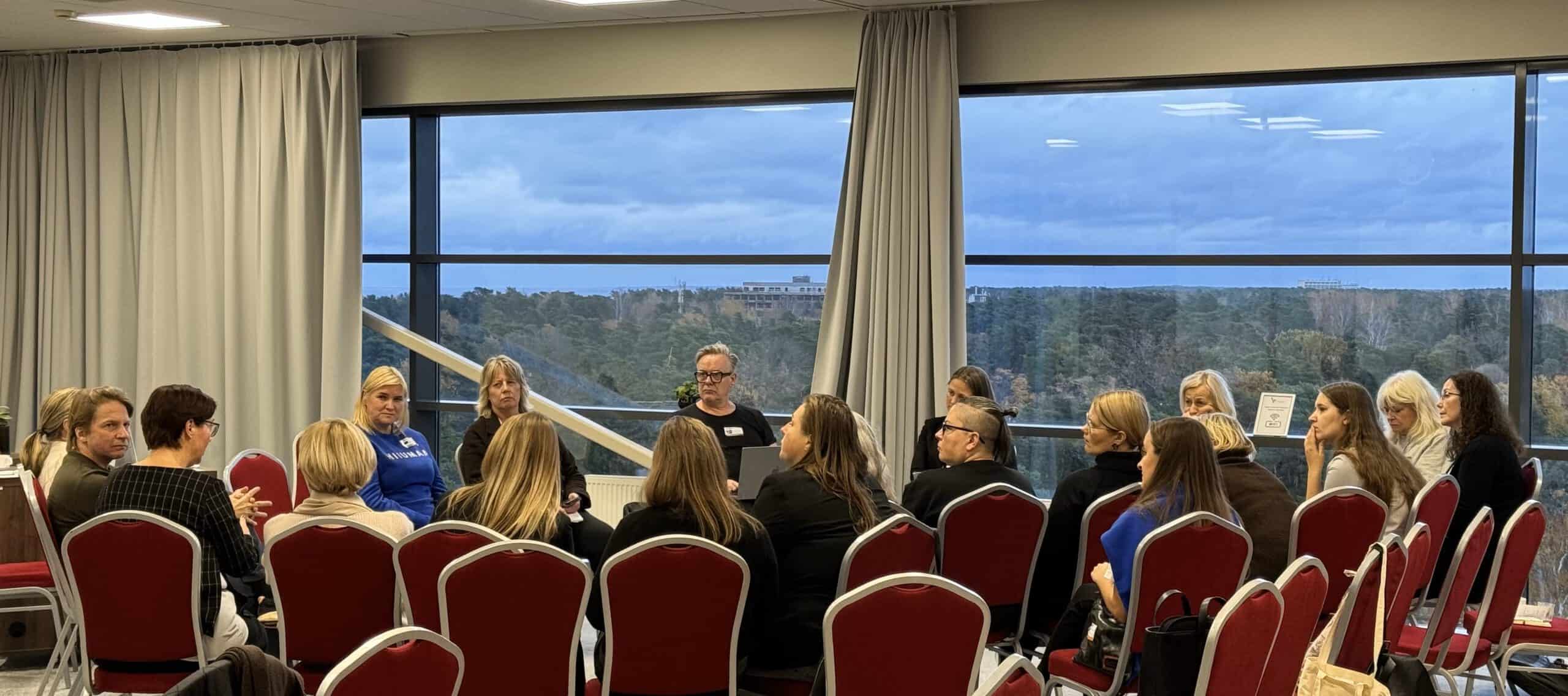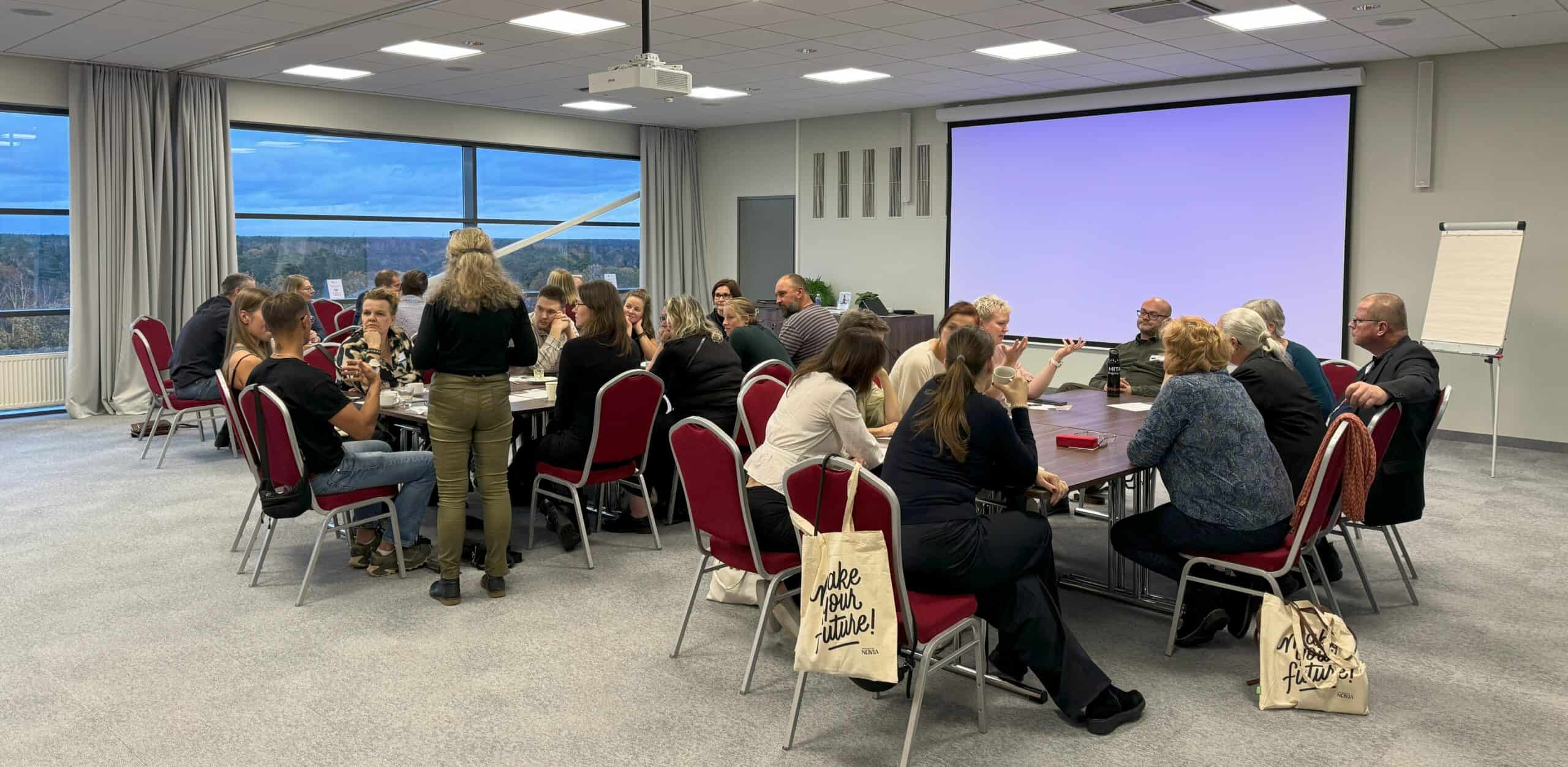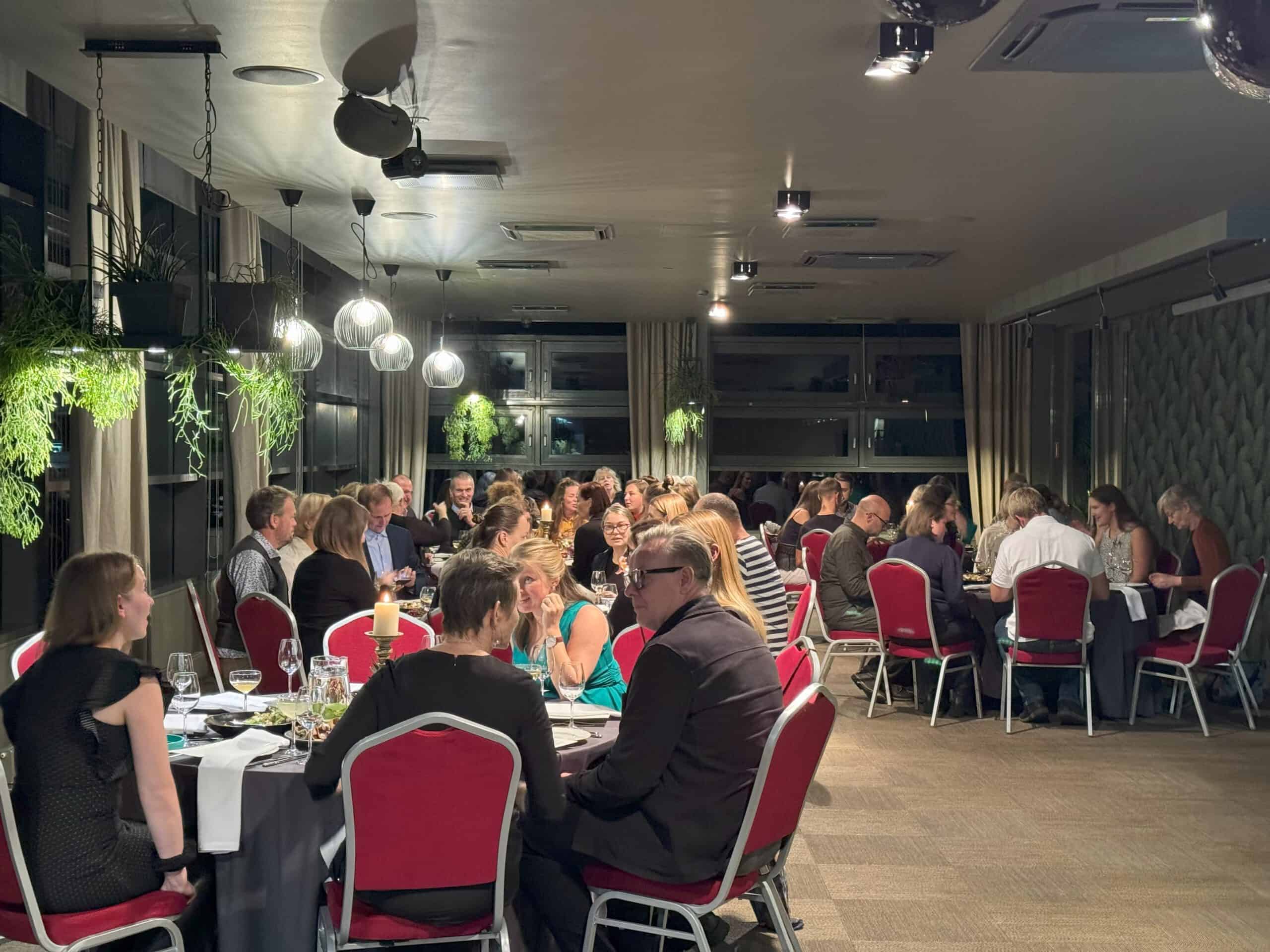
The Jurmala workshop brings the BSR region together
07 November 2024
The days were kicked off by project manager James Simpson and local partner Kurzeme Planning Region’s project manager, Anna Upsava. Sintija Pusaudze from Liepāja Regional tourism office gave a key-note talk of examples of collaborative development when DMOs (tourism visit organisations) and SMEs work together.
Whilst the adjacent golden sand beaches stood starkly barren after a hectic summer and the wind racked through swaying pines, in parallel sessions DMOs, project partners and SMEs worked on the concept and experiences being created in the project. The creating experiences workshop brought everyone together to co-create new ideas collaboratively.
The region’s biggest challenge is the lack of spectacular highlights, especially during the low season. The concept promotes the common cultural and societal values found in the Nordic and Baltic countries. A region where the quality of life is based upon access to nature, outdoor life and hearty foods. The concept developed by Pär Johansson from Stockholm Business Region reflected these values, and the draft concept will be improved upon before being piloted.
After the Light in the Dark concept was revealed, it was time for the tourism entrepreneurs to disclose their ideas for new off-season products to the project partners and DMOs. The creative session sparked ideas on how to possibly develop the initial ideas further to become sellable packages and products in a competitive market.
The day culminated in a dinner that brought the partners together, once more, but now in a more informal way. Over local delicacies of fresh fish, meats, and berries, networks were strengthened, and new collaborations were born. The sound of traditional Latvian music played on the kokle, a native string instrument, added a splendid cultural touch to the evening.
The second day of the meeting started with an online session about distribution channels in the DACH market, presented by tourism specialist Jan Baldur from Nordic Marketing. The project partners, the invited DMOs and SMEs were again divided into workshop sessions.
Project partners worked on the plans and schedules where both the concept and experiences will be piloted in all participating regions and countries in 2025. This is a complicated task as a total of 18 pilots will be executed, evaluated and complied into handbooks, which will be subsequently distributed to SMEs and DMOs throughout the region.
The SMEs were once more divided into new constellations and worked in a learning café facilitated by the team from lead partner Novia University of Applied Sciences comprising of Eva Holmberg, Maria Engberg and Annemari Andrésen. A learning café is a practical and creative way to enrich the discussions. In the different learning café stations, the SMEs benchmarked each other’s best practices and explored new innovative strategies for marketing the Northern Baltic Sea region. Pricing strategies and distribution are important aspects and were discussed and pondered upon at different stations. In the fourth step, the entrepreneurs brainstormed how to design experiences around darkness and silence.
A face-to-face meeting beats online sessions anytime and it feels in hindsight that the process to develop the Northern Baltic Sea region into a new and fascinating off-season tourism region took a big leap forward. A very important spice in the mix was the enthusiastic, driven and passionate tourism entrepreneurs from five different countries and seven different tourism regions as summed up by one SME, “It feels good to be part of something big”, “the concept gave an new insight, trust what you have and leave out all the extras, less is more”.










